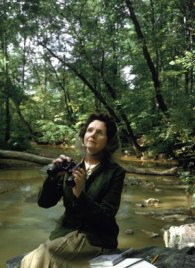This week in our Theories of Writing class, we are wrangling over the place of multi-modalities in classroom instruction and their current and future impact to Rhetoric and Composition. Professor Lamanna asked us to think on how we individually feel about the viability of the CO150 Freshman Composition class in the face of multiliteracies both inside and outside the classroom. Is CO150 a dying breed?
For me, it all comes down to communication. If the “hybridity and intertextuality”, which The New London Group speaks of, can truly blend “creativity and…culture-as-process” together and therefore design new modes of meaning, I am all in (19). Composition pedagogies will benefit, in my opinion, from the fusion of multimedia- text, sound, and visuals. This hybrid, newfound functionality freshens compositional goals-that of “articulating new ways” of getting the message across.
As long as the multimodal pedagogies still promote argument, critical analysis, and rhetorical principles, I say go for it. Because, even with all the bells and whistles, writing still has to make sense. The message still must be communicated effectively. If pictures and sounds are blocking the message, then the writer will need to make changes to be successful in communication. It’s pretty straightforward. Logically speaking, teaching digital design will only serve to better equip students for the future. Technologies build on each other, so the savvy student will be ahead of the game with a firm foundation. Being a deft and flexible writer in all modalities, especially knowing one’s way around interactive technology, is confidence building.
The confidence to approach an argument from many sides is smart. The goal to successfully communicate a message is the prime directive. No matter the newfangled wrappings, the clearness of the message will always make or break the delivery system. Rhetorical principles will always stand the test of time. It’s like how the changes to the automobile changed the approach to auto maintenance. As automobile design advanced, the tools required to maintain the new vehicles changed to meet new standards. But any auto mechanic will tell you, no matter how fancy the car, they still need to learn the basic knowledge of auto repair.
Pamela Takayoshi and Cynthia Selfe point out in “Thinking about Multimodality” that, “it is important to remain in step with the ways in which students, workers, and citizens are communicating” (3). Staying relevant is key. And for now, digital design is a popular mode of communication. Smart classrooms are in demand more and more as, hopefully, attention spans lengthen with the inclusion of interactive classroom material. Takayoshi and Selfe report that “[a]ural and video compositions reveal and articulate meanings students struggle to articulate with words; audio and visual compositions carry different meanings that words are not good at capturing” (3-4). So, if teachers can lessen the struggle some students encounter with writing by implementing technologies…isn’t that worth trying new things? Aren’t the “long-lasting and useful lessons” teachers can provide with multimodal composition methods worth the extra time and training to incorporate them into classroom instruction?
